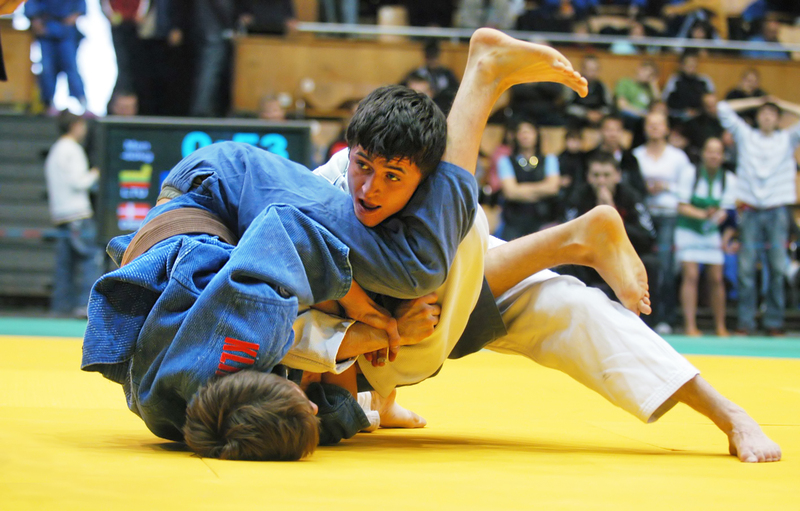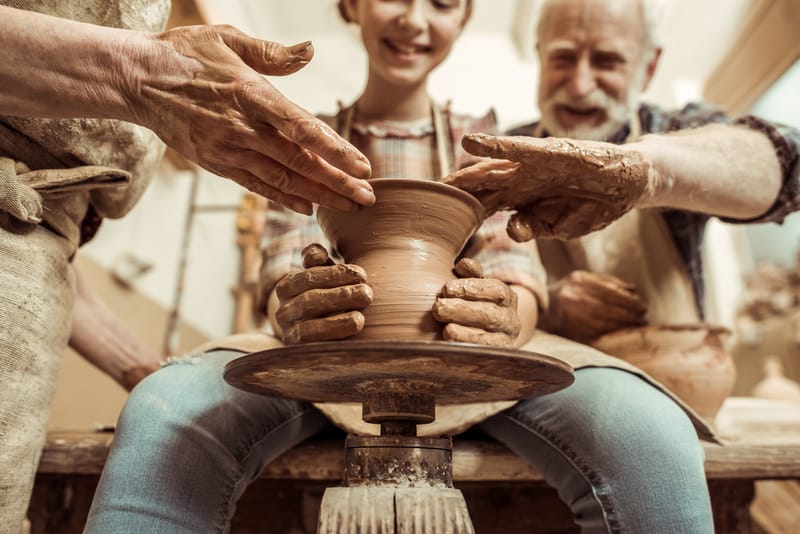Concussions happen when you take a blow in the head or fall violently and hit your head. In Traditional Chinese Medicine (TCM), it is believed that when you have a concussion, blood flow in the head slows down or is stopped causing symptoms like headache, dizziness, and difficulty in concentrating. Acupuncture points for concussion help to bring relief to pain, manage the symptoms of concussions, and improve blood circulation in the head.
What Is A Concussion?
A concussion is a mild traumatic brain injury (mTBI) caused by several incidents, including violently hitting your head on a hard surface and receiving a blow to the head. When this happens, normal brain function is disrupted because some nerves and blood vessels have been stretched and bruised.
However, this disruption in brain function is usually only temporal and not permanent. The symptoms of concussions are mostly subtle, and they go on within days or weeks. Some may last longer than a few weeks, though but be rest assured of getting eventual relief when you use the acupressure points for concussion.
The most common symptoms of concussion are headaches, memory loss, and confusion, but you could experience other symptoms like nausea, fatigue, blurry vision, and vomiting. Some symptoms of concussion come days after the injury. These symptoms include lack of concentration, irritability, sensitivity to light and sound, sleep disturbances, and smell or taste disorders.
Can Acupuncture Help Post-concussion Syndrome?
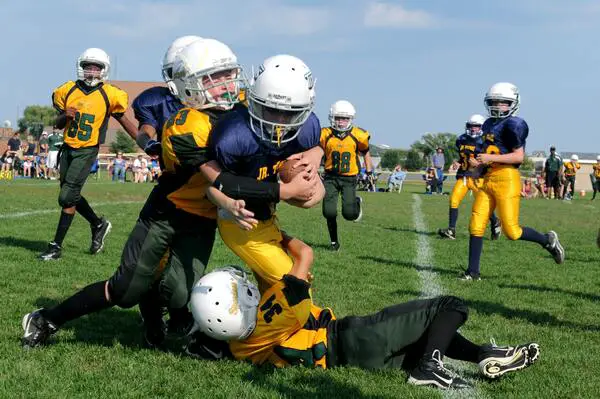
Acupuncture is very effective for post-concussion syndrome. Post-concussion syndrome is when you have concussion symptoms that have lasted beyond the normal recovery period of weeks to months. At this point, the symptoms you begin to experience include persistent headaches, difficulty in concentrating, dizziness, and memory loss.
A 2015 research on a patient who had severe TBI from a snowboarding accident serves as evidence for acupuncture for post-concussion syndrome. For a long time after the accident, the patient was unable to walk. He also developed speech difficulty and poor eyesight. After an acupuncture treatment that lasted for four (4) years, the patient was able to regain significant motor function to take him back to snowboarding. He also significantly regained his speech and vision.
Does Acupuncture Help With Concussions?
Yes, acupuncture treatments help to relieve the symptoms of concussion, whether it is mild or severe or short-term or long-term. Acupuncture and concussion should go hand in hand as acupuncture does resolve not only the headaches and physical symptoms of concussions but also the mental and psychological symptoms. By restoring disrupted blood flow and energy, acupuncture makes for a more holistic treatment for concussions.
A number of research provide scientific evidence for acupuncture for concussions. One such research found that combining acupuncture with chiropractic care is effective in managing the symptoms of mild traumatic brain injury. The research was carried out on a 31-year-old woman diagnosed with mTBI after a fall. It took a total of 8 clinical visits in two and a half weeks for her concussion symptoms to get resolved.
Another clinical trial sought to discover if acupuncture can reduce the emergence of post-traumatic stress disorder (PTSD) as well as affective and cognitive symptoms of TBI patients. The trial involved 120 participants who would be put into three groups – true acupuncture, sham acupuncture, and usual care. It was hypothesized that after one month of treatment, the patients in the real acupuncture group would show fewer symptoms of sleep problems, depression, and other post-concussion symptoms.
Which Acupuncture Points For Concussion?
There are a number of acupuncture points for concussion, four of which I’ll be sharing in this article. Because concussions happen on the head, the meridians for treatment involved are those that run from the head to the other parts of the body. The four acupoints discussed below are on the channels that pass through the head, and they have therapeutic effects that help reduce the symptoms of concussions.
These acupoints are:
Acupoint: GB-20 (Other Names: Gallbladder-20/Feng Chi/Wind Pool)
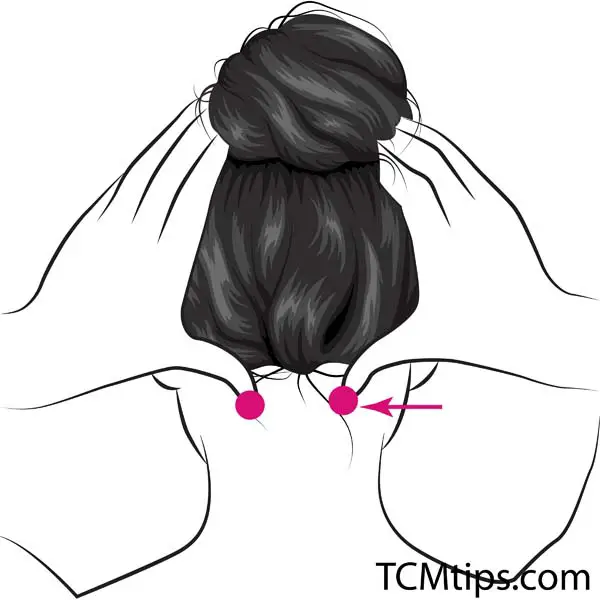
The first of the acupuncture points for concussion is GB-20 or Fengchi as it is called in Chinese. This is a very important acupoint for the treatment of any wind-cold or wind-heat problem. As you may have guessed, GB-20 is located on the head. You’ll find it at the base of your skull, at the depression on both the right and left sides, where your neck meets your skull on the thick rope-like structures called the trapezius tendons.
In Traditional Chinese Medicine (TCM), this acupuncture point for brain injury is responsible for dispelling interior and exterior wind. It clears the head, brings relief to chronic pain, and packs a lot of benefits for the ears, nose, and eyes. This is why, in addition to relieving the symptoms of concussion, it is also used clinically to treat nasal congestion, neck pain, dizziness, swelling of the eye, common cold, and vertigo. GB-20 also serves as one of the acupressure points for cataracts.
To enjoy the healing benefits of GB-20, locate the acupoint, apply gentle pressure on it for 30 seconds, then release. Do this as many times as possible, and you will find that you can relax better as this acupoint has a relaxing and balancing effect on the nervous system.
Acupoint: GB-21 (Other Names: Gallbladder-21/Jian Jing/Shoulder Well)
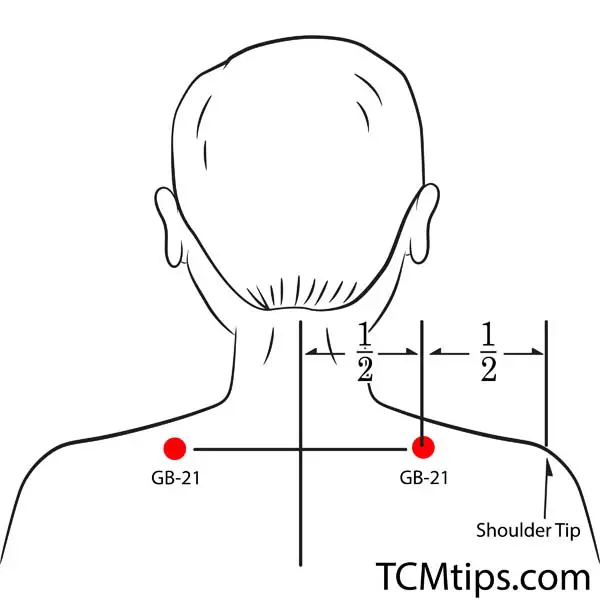
Closely following GB-20 is GB-21. While you may call them siblings, GB-21 is not located on the head. This acupuncture for mild concussion is found on the shoulder. To locate this acupuncture point for the brain, draw an imaginary line from C7, which is the bony prominence of the neck, to the top of your shoulder joint, known as the acromion process. The point that lies halfway, which coincidentally is the highest point of your shoulder muscle, is GB-21. This point lies directly above your nipples, on the shoulder.
Jianjing, as it is called in Chinese acupuncture, is a vital acupoint for easing labor. However, when pushing it for pregnant women during labor, you have to be extra careful as it causes irritation for them. GB-21 is also responsible for resolving phlegm and benefitting the breasts. This is why it is used clinically to resolve insufficient lactation, difficult labor, mastitis, and scrofula. According to experts, GB-21 is also the acupressure for better vision.
To massage this acupoint, apply firm pressure with either your thumb, knuckle, or elbow at intervals of 30 seconds. Doing this will smoothen the flow of energy from your head and neck down to your body.
Acupoint: Bl-60 (Other Names: Urinary Bladder-60/Kun Lun/Kunlun Mountains)
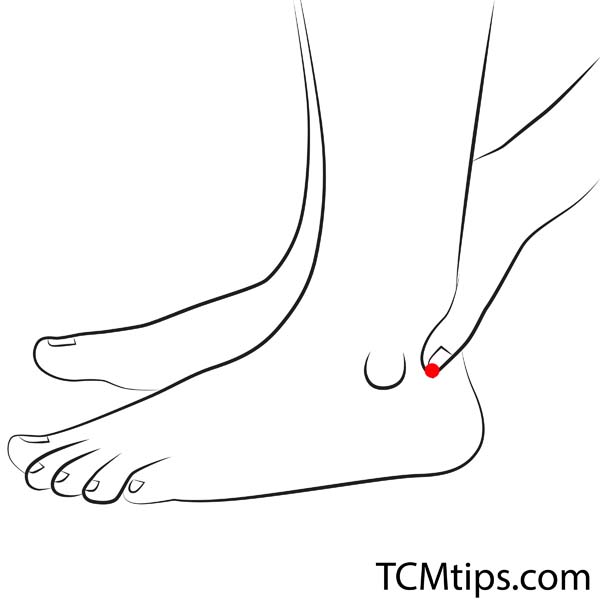
Bl-60, otherwise known as Kunlun Mountains in Chinese acupuncture, is one of the vital acupuncture points for concussion headaches. Unlike the first two acupoints located in the upper part of the body, Kunlun is located at the feet. You’ll find this acupoint close to your heels, in the depression midway between the top of your ankle bone and the outer edge of your Achilles tendon.
This acupressure for concussion is responsible for expelling wind, removing obstructions from the urinary bladder meridian, and relaxing the sinews. Like GB-21, it also promotes labor. Bl-60 is used clinically to treat issues like headaches, pain and swelling on the heel, stiff neck, dizziness, and infantile convulsion.
It is usually best when someone massages this acupuncture for Achilles tendonitis for you. The person should grip the ankles firmly and apply pressure to the acupoint with their thumb. When you properly massage Bl-60, it helps to control your visual sense.
Acupoint: SI-3 (Other Names: Small Intestine-3/Hou Xi/Back Stream)

SI-3, Houxi, or Back Stream is the last of the acupuncture points for a concussion on our list. It is the best acupoint for issues related to the neck and back, especially when coupled with Bl-62. Houxi is located on the hands. The best way to locate it is to make a loose fist. The point that bunches out at the crease of the pinkie finger, on the junction of the red and white skin, and close to the metacarpophalangeal joint there is SI-3.
In TCM, SI-3 is responsible for activating the Small Intestine meridian, expelling exterior wind, and calming the Shen. When properly massaged, Houxi will relieve the pains in the neck, upper back, and spine. This is why it is used clinically to treat rigidity and pain in the neck and back, acute neck pain, acute spasms in the finger, eye congestion, epilepsy, and even malaria.
S1-3 is known widely as one of the acupressure points on the hand for shoulder pain.
Conclusion
Concussions only cause temporal disruption to normal brain function. However, this can last for a long time, depending on the severity of the brain injury. But with these 4 acupuncture concussion treatments, you can be sure to gain complete relief of the symptoms of concussion as:
- GB-20 provides a relaxing and balancing effect on the nervous system.
- GB-21 enhances the smooth flow of energy from the head and neck to the body.
- Bl-60 improves the sense of vision that may have been lost during a concussion.
- SI-3 relieves the pain in the neck, upper back, and spine.
If you have brain inflammation and not a concussion, you should use acupressure for brain inflammation.

Try our Anti-Aging Gua Sha Tool designed to bring out your skin’s natural glow.
Best Gua Sha Product- Anti-Aging: The tool is designed to target 11 specific aging signs such as wrinkles and sagging skin. By following the 7-step routine, users can improve skin firmness and reduce fine lines naturally.
- Enhances Skincare Routine: It works effectively with serums and lotions, boosting absorption and efficacy of skincare products.
- Visible Skin Improvement: Users can expect a smoother complexion, reduced puffiness, and a more youthful appearance.
 P. Sze
P. Sze 